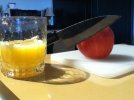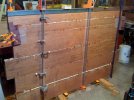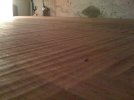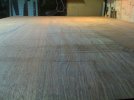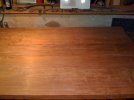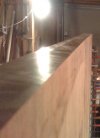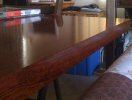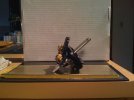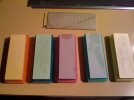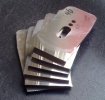- Joined
- Sep 17, 2018
- Messages
- 4
I've been freehand sharpening my cheif's knife for a year now and have gotten quite good at it. I use sandpaper to avoid the hassle of having to flatten whetstones now and then. I start with 600 grit and go up or down depending on the dullness.
Now, my cheif knife is relatively easy to sharpen, it's made of a bright stainless steel. It doesn't take too many passes to get a burr, especially using 220 grit, I get it up to 3000 in less than half an hour. But this is the only knife I can sharpen with ease. Comparatively my other small paring knife is a nightmare to sharpen, I always have to start with 80 grit and give it 50+ strokes until it finally forms a burr ( yes I feel for the smallest raised burr, not a big burr ). What makes this knife so hard to sharpen? (a better question is what makes it go dull so badly, considering I don't use it for anything else besides paring tomatoes and apples).
Other blades that requires tons of elbow grease and time include my woodworking hand planer blades, while I watch people online sharpening using only a few strokes, mine take half an hour on the coarsest grit... I'm really considering switching to a belt for those.
Another thing, I see some people continue sharpening their blades using a finer grit even after it has raised a burr, and finally get rid of it from the other side when they've finished. How does this method compare to removing the burr every time it raises before continuing with a finer grit? I believe the first method involves raising a bigger burr.
Now, my cheif knife is relatively easy to sharpen, it's made of a bright stainless steel. It doesn't take too many passes to get a burr, especially using 220 grit, I get it up to 3000 in less than half an hour. But this is the only knife I can sharpen with ease. Comparatively my other small paring knife is a nightmare to sharpen, I always have to start with 80 grit and give it 50+ strokes until it finally forms a burr ( yes I feel for the smallest raised burr, not a big burr ). What makes this knife so hard to sharpen? (a better question is what makes it go dull so badly, considering I don't use it for anything else besides paring tomatoes and apples).
Other blades that requires tons of elbow grease and time include my woodworking hand planer blades, while I watch people online sharpening using only a few strokes, mine take half an hour on the coarsest grit... I'm really considering switching to a belt for those.
Another thing, I see some people continue sharpening their blades using a finer grit even after it has raised a burr, and finally get rid of it from the other side when they've finished. How does this method compare to removing the burr every time it raises before continuing with a finer grit? I believe the first method involves raising a bigger burr.


